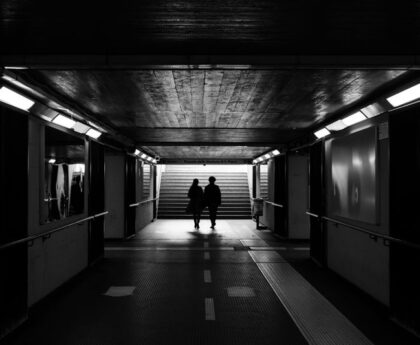Air quality ‘very poor’ in Sydney‘s east as smoke from hazard reduction burning settles in city
Overview
Sydney residents woke up to a blanket of smoke on Monday morning as hazard reduction burning took place across the city. The smoke, which settled in overnight, resulted from back-burning operations conducted in Holsworthy in the southwest and the Ku-ring-gai Chase National Park in the north. As a result, air quality in the eastern parts of Sydney was rated ‘very poor’, while central west Sydney recorded ‘poor’ air quality. The New South Wales Rural Fire Service (RFS) indicated that more burns could lead to further smoke until mid-week. Premier Chris Minns emphasized the importance of hazard reduction ahead of the bushfire season, acknowledging that Sydney may experience haze in the air due to these operations.
The Hazards of Poor Air Quality
According to the state government’s air quality monitoring stations, the air quality in Sydney‘s east was deemed ‘very poor’ on Monday morning. This serves as a reminder of the importance of maintaining good air quality, not only from an environmental perspective but also from a public health standpoint. Poor air quality can lead to a range of respiratory issues, particularly for individuals with pre-existing conditions such as asthma or lung diseases. The smoke from hazard reduction burns contains fine particulate matter that can irritate the airways and cause breathing difficulties. It is therefore crucial for vulnerable individuals to reduce their outdoor activities while smoke levels remain high.
Protecting Homes and Ensuring Safety
The hazard reduction burns currently taking place in Sydney serve a critical purpose in protecting homes from potential bushfires. According to NSW RFS Inspector Ben Shepherd, these burns will directly safeguard hundreds, if not thousands, of homes that did not burn during the previous fire season. Despite the inconvenience of smoke and haze, Premier Chris Minns stressed the importance of these operations, stating that it is far better to endure temporary pollution than to face the devastation of a bushfire. With warmer weather and dry conditions forecasted in the coming days, it becomes imperative to complete these hazard reduction burns ahead of the potentially dangerous fire weather.
Importance of Environmental Planning
Impacts of Climate Change
The ongoing wet weather in recent years has hindered hazard reduction burning, leading to a backlog of burns that needed to be completed. Climate change is a contributing factor to this increasingly wet weather pattern, which has resulted in a greater risk of bushfires when the weather turns hot and dry. As Australia experiences more extreme weather events and changing rainfall patterns, it becomes crucial to adapt our environmental planning strategies. This includes not only conducting hazard reduction burns but also implementing sustainable land management practices, promoting bushfire-resistant building designs, and investing in early warning systems and firefighting capabilities.
Balancing Environmental Protection and Public Health
While hazard reduction burning is critical for bushfire prevention, it is essential to strike a balance between environmental protection and public health. The smoke generated from these burns can contribute to air pollution and pose risks to vulnerable individuals. As such, it is important for authorities to carefully consider weather conditions and air quality forecasts before conducting these operations. Additionally, efforts should be made to minimize the impact of smoke on populated areas as much as possible. This can be achieved through strategic planning, timely communication with affected communities, and alternative methods of hazard reduction when air quality is compromised.
Advice for the Public
Protecting Yourself from Smoke
For individuals living in areas affected by smoke from hazard reduction burns, it is crucial to take necessary precautions to protect their health. People with pre-existing respiratory conditions, such as asthma or lung diseases, should avoid or minimize outdoor activities when smoke levels are high. Staying indoors with windows and doors closed and using air purifiers or air conditioning systems with filters can help reduce exposure to smoke particles. It is also advisable to follow any guidance or warnings from local authorities regarding air quality and health risks.
Supporting Environmental Initiatives
As climate change continues to pose challenges, it is important for individuals and communities to support environmental initiatives that promote sustainability and resilience. This includes advocating for responsible land management practices, supporting measures to reduce greenhouse gas emissions, and participating in community-led efforts to tackle climate change. By working together, we can help mitigate the impacts of climate change and protect both our environment and public health.
In conclusion, the smoke from hazard reduction burning in Sydney serves as a reminder of the delicate balance between protecting homes from bushfires and safeguarding public health. As climate change brings about more extreme weather events, it becomes imperative to adapt our environmental planning strategies and find ways to reduce the impact of smoke on populated areas. By taking necessary precautions and supporting environmental initiatives, we can strive towards a more sustainable and resilient future.

<< photo by Anastasia Shuraeva >>
The image is for illustrative purposes only and does not depict the actual situation.
You might want to read !
- Smoky Skies Over Sydney: The Lingering Consequences of Burn-off
- Air Quality Plummets in Sydney’s East as Hazard Reduction Burns Continue: A Concerning Conundrum
- “Sydney’s Smoke Siege: Battling Hazards and Hazy Climates for Months”
- Sydney’s Smoke Scare: Authorities Battle to Tackle Hazard as Residents Brace for Months
- White Powder Controversy: Valentine Holmes’ Explosive Alibi Unveiled
- Bushfire Smoke Blankets Sydney: How Long Will the Haze Hang Over?
- “Sydney Chokes on Hazard Burns: Air Quality Plummets Amidst Thick Smoke”
- Scorching Times Ahead: Australia Braces for a Hot and Arid Spring
- Gina Chick: Australia’s Unstoppable Environmental Advocate
- Tackling Climate Change: Australia’s Top Priority in the Intergenerational Report




